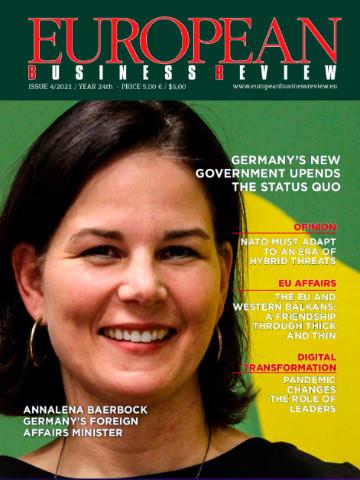Greece is the only country that is still in an ESM programme. There are three reasons why it took Greece so long

Greece’s current programme will end on 20 August 2018. The ESM will disburse a final €15 billion loan once all national procedures have been completed. This will allow Greece to leave the programme with a liquidity buffer of more than €24 billion in August. This liquidity buffer is sufficient to cover Greece’s financing needs for 22 months after the end of the programme.
by
Klaus Regling*
First, the problems at the beginning of the crisis in Greece were much deeper than in other programme countries. Second, the country’s administration is weaker than that of other euro area countries. And third, unfortunately, the country reversed very important reforms in the first half of 2015. There was an attempt to halt the reform programme it had agreed to. The result was that Greece dropped back into recession. The Greek central bank estimates that this cost the country some €86 billion.
Since then, Greece can point to impressive progress. Wages and salaries were cut by 20 to 30%. That was needed, because they had risen much faster than productivity in the past. As a result, the country lost its competitiveness. Since 2016, the Greek budget has consistently posted a small budget surplus, and that while in 2009, it had a budget gap of 15% of GDP. So Greece has something in common with Germany, which also has a small budget surplus.
Greece’s current programme will end on 20 August 2018. The ESM will disburse a final €15 billion loan once all national procedures have been completed. This will allow Greece to leave the programme with a liquidity buffer of more than €24 billion in August. This liquidity buffer is sufficient to cover Greece’s financing needs for 22 months after the end of the programme.
Moreover, the latest Eurogroup meeting of euro area finance ministers agreed to provide further debt relief measures. The finance ministers had already promised this in May 2016 and again in June 2017, if Greece were to successfully conclude its programme. None of these measures have an impact on the German budget. There will be no haircut.
You may ask if Greece will ever be able to repay the money it has borrowed. My answer to that question is: yes, it will. Economies that have been weakened by a crisis can pay back rescue loans in their entirety, as long as debt servicing costs are spread over time, and do not exceed the threshold of 15 to 20% of GDP.
Germany itself was the beneficiary of debt servicing costs spread out over time. It was only in 2010 that it paid the last instalment of the 1953 London agreement on Germany’s debts – 57 years later.
The goal of the assistance programmes and reforms in Greece over the past eight years has been to create a new basis for healthy and sustainable growth. This is in the interest of the Greek people, but also in the interest of the euro area, and the ESM. The ESM is by far Greece’s largest creditor. So far, both institutions have lent €189 billion to Greece. That is roughly 100% of Greek GDP, and more than half of its public debt.
For the future, it is important that Greece continues to reform its economy. If it rows back on reforms, some of the additional debt relief measures will be suspended. Athens will remain under the scrutiny of the ESM until all loans have been fully repaid.
Greece knows that financial markets and investors will constantly monitor and assess the country, just like other former programme countries. What is important for the market is that Greek economic policy continues to aim for growth and competitiveness after the end of the programme.




 By: N. Peter Kramer
By: N. Peter Kramer

